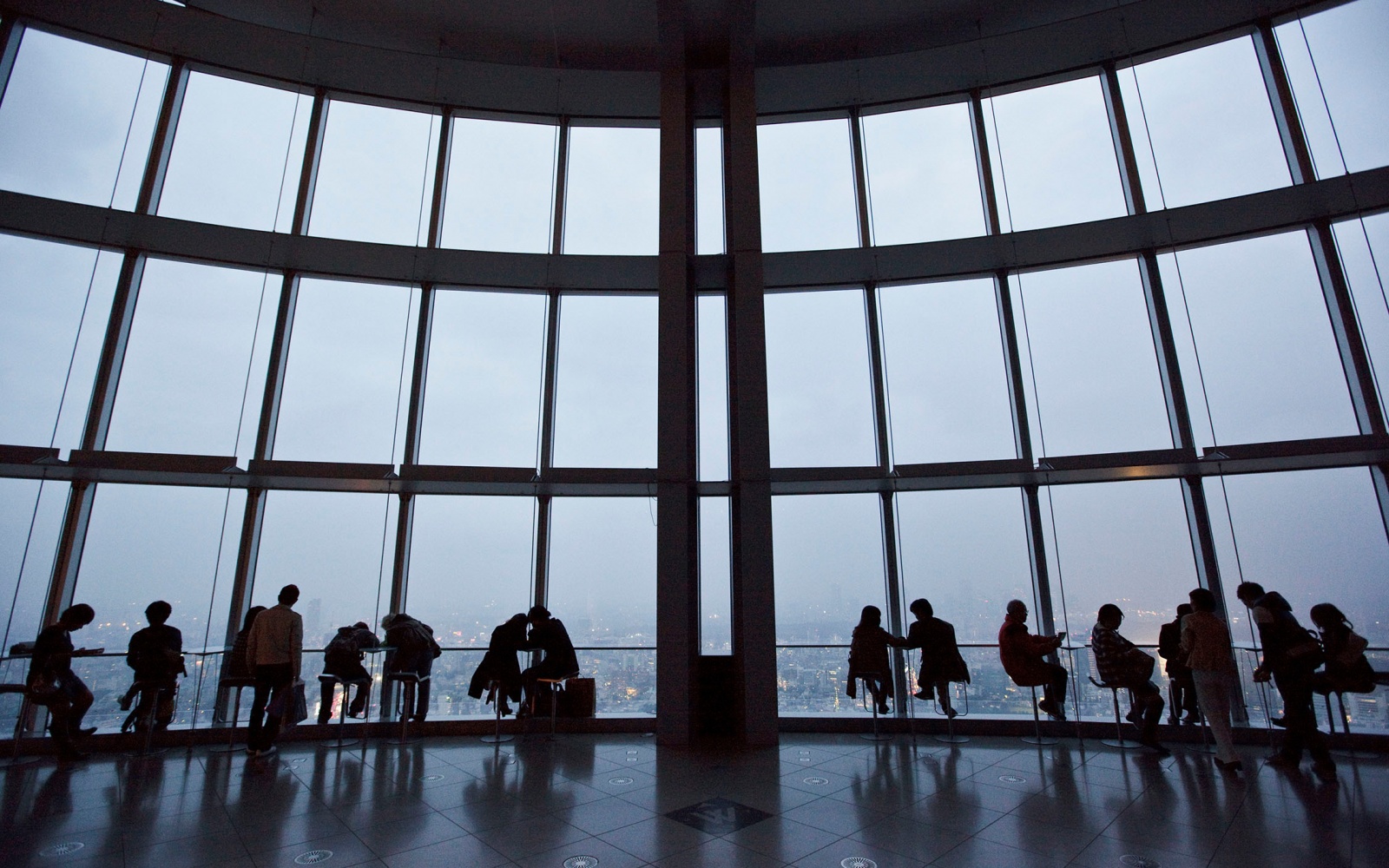
Though is has a seedy reputation, Tokyo’s Roppongi neighborhood has some of the best museums, restaurants and shopping in the city.
The Roppongi neighborhood in Tokyo has a well-deserved reputation for being dissolute, but far more interesting than the seedy clubs and bars nestled in its streets are its world-class museums, galleries, shops, and restaurants. Some of the best in Japan can be found here, and without the hustle and bustle of Ginza or the mass global tourism in Asakusa to boot.
Savoir Vivre. Located on the third floor of the Axis Building, which houses a number of terrific design stores, this small gallery has a collection of modern pottery and lacquer-ware for sale from an array of top artists. The work changes periodically, and is usually first-rate.
Mori Art Museum. The super sleek edifice, established by real estate tycoon Minoru Mori in 2003, hosts a series of modern exhibits, from Le Corbusier to lesser-known Japanese artists whose work is on the cusp of international recognition. Its observation deck on the 52nd floor offers spectacular city views (pictured). It’s full of dazzling, visual excitement.
Suntory Museum of Art. Located inside Tokyo Midtown, which is also home to many stores, restaurants, and hotels, this museum has a great collection of antique Japanese artisanal products as well as ongoing exhibits.
Muji. This store has wonderful and unique clothing for sale that is comfortable, fashionable, and makes use of natural fibers such as cotton and wool. The muted colors are a nod to Japanese appreciation of nature.
Nuno. Owned and managed by Reiko Sudo, Nuno, which means fabric in Japanese, sells museum-quality clothing and bolts of cloth you can buy to take home. Several of Sudo's textiles are included in the Museum of Modern Art's Design Collection in NYC, and the interior design of the ultra-posh Mandarin Oriental Tokyo is all her work.
Honmura An. Once upon time, this extraordinary soba restaurant had a place in Soho, NYC. Nowadays, you have to travel to Tokyo to enjoy these fresh buckwheat noodles. Seated on tatami mats, a cold beer in hand, Honmura An provides calm that is much needed in frenetic Tokyo.
The Oak Door. Inside the Grand Hyatt is one of the city’s best steak houses, where you can enjoy the famous marbled beef of Kobe as well as equally delicious, but not as well known cuts from Kagoshima.
Ruby Jack’s. Chef Matthew Crabbe, who used to be a sous chef at Park Hyatt, opened this vibrant restaurant just over a year ago with a couple of guys from Ghana and New Zealand. The food is straightforward and delicious, from raw oysters to great steaks, and with a list of rare Japanese whiskies to match. Don’t miss the bargain prix-fixe lunch, where two courses with coffee or tea (tax and tip are included in Japan) will set you back about $42 for two.
Sukiyabashi Jiro. The original Jiro’s, made famous in the movie, “Jiro Dreams of Sushi,” is a tough reservation to snag, but this spot from Jiro’s son is easier to get into, and sushi lovers say it’s well on its way to having raw fish as good as his father’s—at far below his prices.
Toraya. First established about 500 years ago, this confectionary gives you a chance to sample wagashi, authentic Japanese sweets. Jellied yokan, monaka (sandwiched wafers with bean curd filling), and namagashi (fresh, seasonal treats that change daily) are a good way to finish a meal.
End your day at the Ritz Carlton, where peace and quiet are enhanced by the elegance of its bar on the 45th floor. Looking over the district, you may reflect on the rich diversity of Roppongi, one of the most exciting sections in town.
More good reads from T+L:
• In Photos: Japan’s Ultra-Competitive Cycling Culture
• The Country’s Best Hotel Art Installations to See Right Now
• Best Places to Travel in 2015